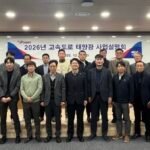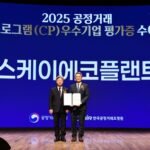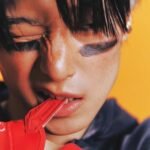
Hyosung TNC Corp., the world’s largest spandex manufacturer, is facing an unexpected problem: The stretchy fiber that powered the athleisure revolution is losing appeal among the next generation of consumers who prefer their workout clothes baggy.
In recent weeks, the South Korean company‘s third-quarter operating profit estimates have been cut repeatedly.
NH Investment & Securities Co. revised down its estimate for the textile giant’s operating profit from 79 billion won ($54.5 million) to 75 billion won in late October.
Hana Securities Co. went further, lowering its forecast to 59.5 billion won, roughly 25% below market consensus.
The reason isn’t a supply-chain problem or rising costs.
It’s a shift in fashion preferences among consumers in their 20s, who are abandoning the form-fitting leggings that dominated activewear for over a decade.
LOOSE FIT NOW RULES

Leggings commanded 46.9% of the women’s activewear bottoms market in the US and the UK in 2022, according to retail analytics firm EDITED. By 2024, that share had fallen to 38.7%.
Over the period, shoppers have increasingly opted for joggers, track pants and wide-leg styles.
Pinterest data also shows that searches for “loose-fit activewear” are rising, with 58% of those queries coming from users aged 18 to 24.
Fashion trade publication Business of Fashion recently noted, “After dominating wardrobes for more than a decade, leggings are no longer the go-to bottom for many younger consumers — even in the gym.”
The shift is hitting major brands hard.
Lululemon Athletica Inc., once synonymous with the athleisure boom, has seen its stock drop roughly 50% this year.

The company’s annual earnings-per-share guidance of $12.77 to $12.97 falls short of the $14.45 analysts expected.
The company plans to reduce the share of leggings in its product mix while introducing new items that cater to the latest trend in a bid to find a breakthrough.
Competitor Alo Yoga, an American premium athletic apparel retailer, has already pivoted toward loose-fit pants and track bottoms.
A recent Nike collaboration with Kim Kardashian’s Skims brand also offers baggy pant options for consumers moving away from skin-tight styles.
SPANDEX PRODUCERS FEEL THE SQUEEZE
The fashion change is affecting spandex manufacturers beyond Korea. In China, the world’s largest producer and consumer of spandex, related companies are pulling back.

Huafeng Chemical’s net profit fell 35% year-over-year in 2024. Competitors, including Yantai Tayho Advanced Materials and Bailu, are seeing factory utilization rates decline and the benchmark spandex market prices soften, pressuring margins.
The industry’s new capacity additions are expected to total just 70,000 metric tons in 2026, down from 160,000 tons this year, a 56% contraction, suggesting manufacturers’ caution about future demand.
Analysts expect this trend to continue for a while as the market works through dwindling demand.
GEN Z‘S DIFFERENT PRIORITIES
The change underlines Gen Z’s distinct approach to clothing, setting them apart from millennials.
While millennials embraced body-conscious athleisure as part of wellness culture, Gen Z prioritizes comfort and self-expression over form-fitting styles, according to trend analysts.

Fashion observers also note that younger consumers increasingly favor relaxed silhouettes that emphasize ease over compression, reflecting broader generational values around comfort and self-presentation.
Korean activewear brands are adapting to the new wave.
Andar has expanded its men’s line and moved into golf and training apparel designed for everyday wear.
Mulawear is repositioning around the so-called swimleisure, combining swimwear and yoga wear to diversify beyond leggings.
Both companies are rebranding themselves as lifestyle wear providers, an acknowledgment that form-fitting bottoms have lost their appeal among younger consumers.















